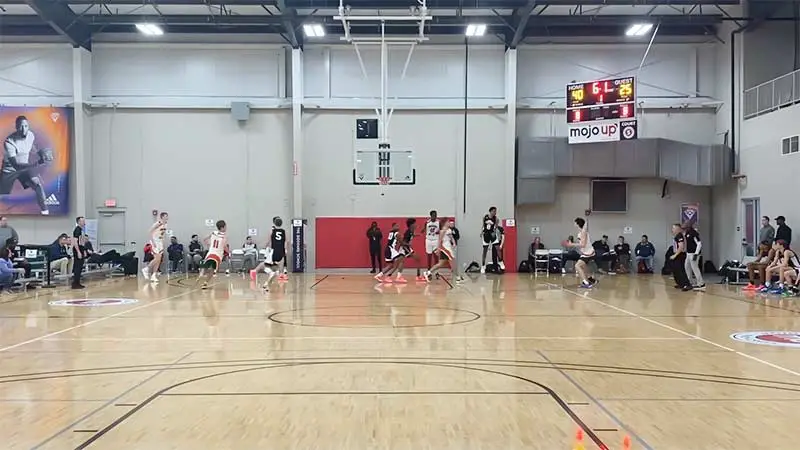Basketball is a game of strategy, skill, and timing, with each period playing a crucial role in the flow and outcome of the match.
Whether it’s the fast-paced quarters of the NBA or the structured halves of NCAA games, understanding the different periods can help fans and players alike appreciate the nuances of the sport.
The length and structure of these periods vary across different leagues, impacting everything from game strategy to player stamina.
In this article, we’ll explore how periods are defined in various basketball leagues, the factors that influence their duration, and the role overtime plays in extending the excitement. Dive in to discover how these time segments shape the game and keep fans on the edge of their seats.
Explained: Periods in Basketball and Their Significance
Understanding periods in basketball, commonly referred to as quarters or halves depending on the league or level of play, is essential for following the game. Here’s a breakdown:
Duration of Periods in Various Leagues
Basketball periods, or quarters, vary in duration across different leagues. The National Basketball Association (NBA) uses four quarters, each lasting 12 minutes.
College basketball games, governed by the National Collegiate Athletic Association (NCAA), consist of two 20-minute halves. High school basketball typically features four quarters of eight minutes each.
In international play, overseen by the International Basketball Federation (FIBA), games also consist of four quarters, but each quarter is 10 minutes long.
Historical Evolution of Game Periods
The duration and structure of basketball periods have evolved significantly over time. When Dr. James Naismith invented basketball in 1891, the game consisted of two 15-minute halves.
By 1905, the NCAA adopted two 20-minute halves, a format still used today in college basketball.
In 1951, the NBA adopted the four 12-minute quarter format, which remains standard. These changes aimed to create a more dynamic and high-scoring game, enhancing the overall fan experience.
Types of Periods in Basketball
In basketball, periods refer to the segments of the game during which play occurs. The types of periods can vary depending on the league, level of play, and the specific rules being followed. Here are the main types of periods in basketball:
Quarters and Halves Explained
Basketball games use quarters and halves depending on the league. Quarters divide the game into four equal parts, lasting 12 minutes in the NBA and 10 minutes in FIBA competitions, with high school and youth leagues often using 8-minute quarters.
Halves, used in NCAA men’s college basketball, split the game into two 20-minute periods with a single extended intermission called halftime, and do not include short breaks.
| League | Period Type | Duration per Period |
|---|---|---|
| NBA | Quarters | 12 minutes |
| FIBA | Quarters | 10 minutes |
| NCAA Men’s (College) | Halves | 20 minutes |
| High School | Quarters | Varies (typically 8 minutes) |
| Youth Leagues | Quarters | Varies |
Overtime: Trigger and Rules
Overtime begins when a basketball game ends in a tie after regulation periods to determine the winner. In the NBA, FIBA, and NCAA, each overtime period lasts 5 minutes, with regular scoring and timing rules applied.
Players’ fouls and statistics carry over, and teams receive additional timeouts, with the game restarting via a jump ball or alternating possession in FIBA. The overtime rules ensure a fair and dynamic conclusion, emphasizing player performance.
Game Flow Within Periods
Understanding the flow of a basketball game within periods is crucial for both players and spectators. Here’s how the game typically progresses within each period:
Scoring Dynamics
Scoring dynamics within periods significantly impact game outcomes. Offensive strategies, such as the triangle offense and the UCLA offense, focus on creating close-range shots and open jump shots, and are particularly beneficial for guard-oriented teams.
Defensive strategies aim to minimize scoring through zone defenses or man-to-man coverage, disrupting the offensive flow. In the NBA, player disqualifications after six personal fouls or two technical fouls can also influence team strategies and game dynamics.
Clock Management Strategies
Clock management in basketball is essential for optimizing gameplay, with teams using deliberate pacing and strategic timeouts to control the tempo. This includes running down the clock when ahead and speeding up play when trailing.
The shot clock, which resets after field goal attempts and fouls, ensures continuous play and adds pressure in close games. Managing team fouls is crucial, as accumulating over four fouls in an NBA quarter gives opponents two free throws, affecting defensive strategies.
Effective scoring dynamics and clock management are vital for influencing the game’s flow and outcome.
Structural Differences Between Leagues
Different basketball leagues around the world may have structural differences that affect how the game is played. Here are some key distinctions between leagues:
NBA vs. NCAA: Periods and Game Length
NBA games feature four quarters, each lasting 12 minutes. This structure results in a total game duration of 48 minutes. In contrast, NCAA men’s basketball consists of two halves, each lasting 20 minutes, totaling 40 minutes of play.
This different structuring affects game dynamics and strategies. In the NBA, the four-quarter system allows for more frequent breaks, which can be used for strategic adjustments.
On the other hand, NCAA’s two-half format condenses the game, potentially increasing the intensity of each period.
International Rules: FIBA Standards
FIBA games have four 10-minute quarters, totaling 40 minutes, which are 8 minutes shorter than NBA games but equal in duration to NCAA games.
FIBA’s uniform rules ensure consistency in international competitions, with shorter quarters leading to quicker rotations and faster-paced games.
The NBA and FIBA use quarter-based structures for strategic breaks, while the NCAA’s two-half system imposes different demands on players, highlighting the importance of understanding these differences for team preparation and competition.
Frequently Asked Questions
Are there 4 periods in basketball?
In the NBA, a standard game consists of four quarters, each lasting 12 minutes. Similarly, FIBA games have four periods, but each lasts 10 minutes. However, NCAA men’s basketball features two 20-minute halves.
How many minutes is basketball played?
An NBA game lasts 48 minutes, comprising four 12-minute quarters. FIBA games feature four 10-minute quarters, totaling 40 minutes. NCAA men’s basketball games last 40 minutes, divided into two 20-minute halves.
How many periods are there in basketball?
The number of periods depends on the league. The NBA has four 12-minute quarters, while NCAA men’s basketball has two 20-minute halves. FIBA games consist of four 10-minute quarters.
What is halftime in basketball?
Halftime occurs at the midway point of a game. In the NBA, it happens between the second and third quarters and typically lasts 10 to 15 minutes. This break allows players to rest and strategize for the second half.
Is it a 3-pointer if you jump over the line?
To count as a three-pointer, a player’s feet must be completely behind the three-point line when they shoot the ball. If their feet are on or over the line, the shot counts as a two-pointer.
Conclusion
Understanding the differences in game periods across various basketball leagues is crucial for teams and players aiming to compete at high levels.
Each league’s unique structure, such as the NBA’s four 12-minute quarters, NCAA’s two 20-minute halves, and FIBA’s four 10-minute periods, influences game dynamics, strategic planning, and player performance.
These variations affect game pace, conditioning, and substitution patterns. Knowledge of these distinctions enhances strategic approaches, enriches experiences, and helps coaches tailor training regimens and optimize performance.
Different period structures shape game flow and impact fatigue management and in-game adjustments.
Coaches must efficiently use timeouts and manage player rotations to maintain competitiveness, adapting tactics to exploit opponents’ weaknesses for a higher chance of success.








Buzz Williams